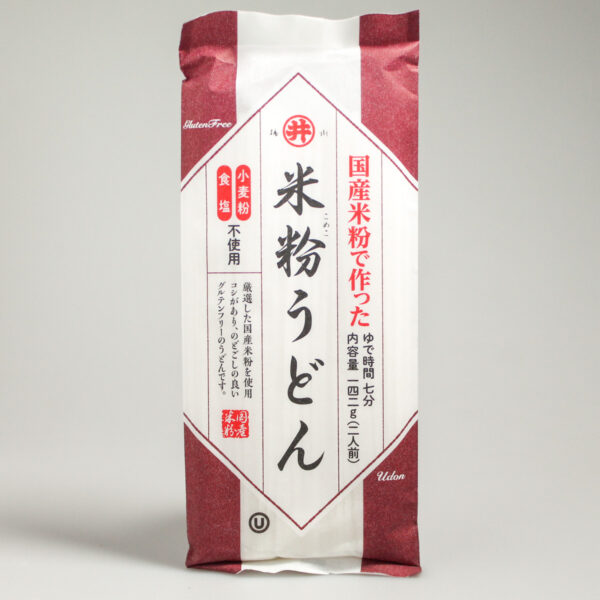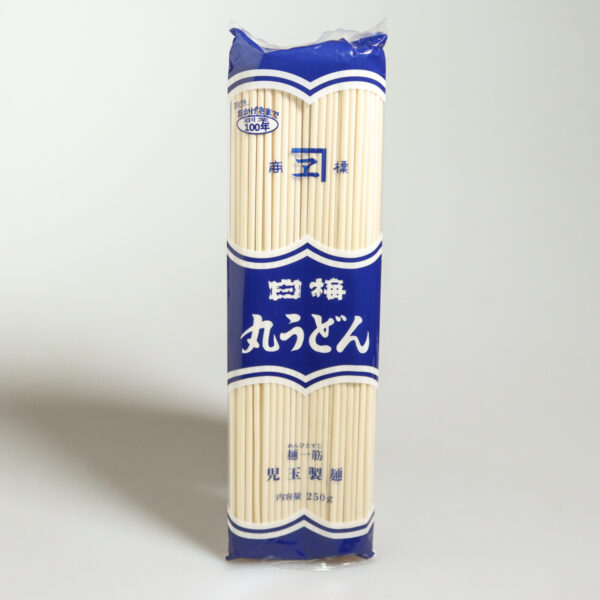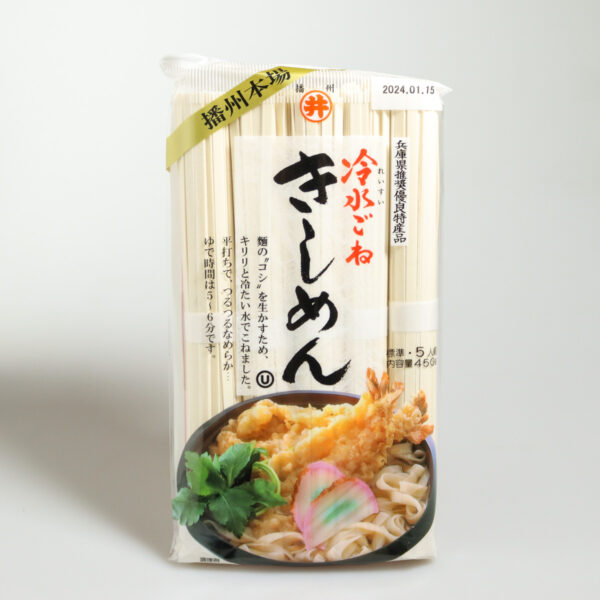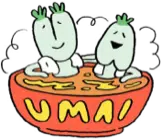Udon
Showing all 3 results
Products
-
Gluten-free Rice Udon
Producteur : Toa 6.60 € Add to basket -
Thick Udon
Producteur : Sanuki Shisei 5.20 € Add to basket -
Flat Udon “Kishimen”
Producteur : Toa 8.20 € Add to basket
There are three main families of noodles in Japanese cuisine: soba, somen and udon. The latter are wheat noodles. As such, they cannot escape the controversy over the birthplace of “pasta”. Could they have originated in China, like Japanese rice and ramen?
The udon myth
A thousand-year-old legend has it that it was the monk builder Kukai who brought it back from the Silk Road, but only one thing is certain: the Japanese were the first to serve it in hot or cold broth, with a variety of toppings.
“Tanuki udon with dashi broth and tempura flakes, Ise udon marinated in black soy sauce, Kamaage udon served hot with soy and dashi tsuyu broth, Kitsune udon with fried tofu slices… These versatile wheat noodles can be adapted to suit all tastes and seasons.
Thousand and one noodles
Like Italian noodles, they can be shaped in a thousand different ways. Some are quite cute: “Mimi look like little ears and Kishimen are flat like tagliatelle. Others are more extreme: ‘Himokawa’ from Gunma Prefecture, for example, can be up to 15 centimetres wide.
To be clear, making your own udon is quite simple. All you need is soft wheat flour, salt, a little water and a little elbow grease. However, udon made this way will never taste as good as udon made in the archipelago.
The land of kings
Why is that? Because Japan has the freshest water of any developed country, thanks to the filtering action of its volcanic ash subsoil. These waters, with their extremely low sodium and iron content, do not interfere with the delicate flavour of wheat. It is also the water used to brew sake and infuse dashi of unrivalled elegance.
.png)



